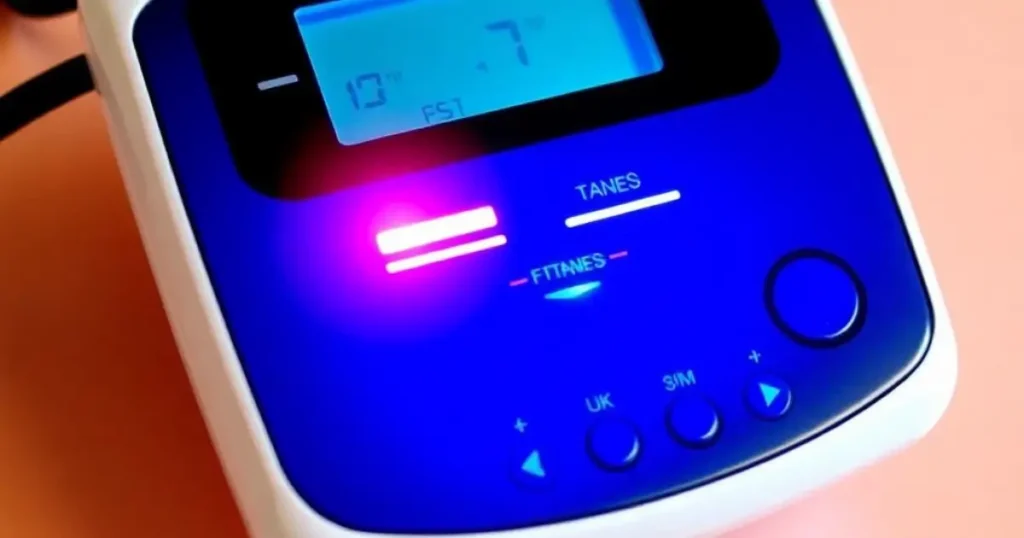This comprehensive guide examines the potential of using Transcutaneous Electrical Nerve Stimulation (TENS) units as a treatment for erectile dysfunction (ED). With growing interest in non-invasive therapies, TENS therapy has emerged as a possible alternative or complementary option for men seeking to improve erectile function.

The guide provides science-backed insights into how TENS works, including its mechanisms, proper pad placement, and relevant clinical research. It also addresses common misconceptions, potential risks, and contraindications, while offering expert commentary and real-world case applications.
By the end of this article, readers will have a clear understanding of the safety, effectiveness, and correct usage of TENS units for ED, empowering them to make informed decisions in consultation with their healthcare providers.
Introduction
Erectile dysfunction (ED) affects millions of men worldwide and can significantly impact quality of life, self-esteem, and intimate relationships. While oral medications like sildenafil (Viagra) and tadalafil (Cialis) are commonly prescribed, alternative treatments are gaining attention—one of which is the Transcutaneous Electrical Nerve Stimulation (TENS) unit.
But can you use a TENS unit for erectile dysfunction, and if so, how does it work? In this comprehensive guide, we’ll dive into the science behind TENS therapy, explore its potential applications for ED, explain the correct TENS unit pad placement for erectile dysfunction, and assess real-world efficacy based on research and expert insight.
What is a TENS Unit?
Definition and Function
A TENS unit is a portable, battery-operated device that sends electrical impulses through adhesive electrode pads placed on the skin. It’s traditionally used to relieve chronic pain, muscle tension, and nerve-related discomfort by stimulating nerves and promoting circulation.
Mechanism of Action
TENS units work via two primary pathways:
- Gate Control Theory: Electrical impulses block pain signals from reaching the brain.
- Endorphin Release: Stimulates the release of endorphins, the body’s natural painkillers.
This same mechanism may improve blood flow and nerve function in the pelvic area, which is vital for achieving and maintaining erections.
Erectile Dysfunction: A Brief Overview
Causes of ED
ED can result from physical, psychological, or lifestyle-related factors. Common causes include:
- Cardiovascular disease
- Diabetes
- Nerve damage
- Obesity
- Low testosterone
- Anxiety or depression
Current Treatment Options
- Oral medications (PDE5 inhibitors)
- Penile pumps
- Injections
- Surgery (penile implants)
- Lifestyle changes (diet, exercise, stress management)
TENS therapy is emerging as a non-invasive alternative that may support or enhance traditional treatments.
How TENS Units May Help With Erectile Dysfunction
Nerve Stimulation and Blood Flow
One of the leading theories is that TENS stimulates pudendal nerves and pelvic floor muscles, promoting better blood circulation in the penile region. Enhanced blood flow and nerve activity are critical for erectile function.
Supporting Research
- Zhou et al. (2014) found that pelvic floor stimulation improved erectile function in men with diabetic neuropathy.
- Yamanishi et al. (2010) demonstrated that neuromodulation improved symptoms of urinary incontinence and ED when applied to the sacral area.
- El-Sakka et al. (2009) noted improvements in erectile function with electrical stimulation targeting the perineal region.
While more research is needed, these studies suggest a physiological basis for using TENS therapy for ED.
How to Use a TENS Unit for Erectile Dysfunction
Step-by-Step Guide
- Consult a healthcare provider before beginning.
- Clean the area and attach electrode pads to the appropriate region (see placement below).
- Start with a low-frequency setting (2–10 Hz) and gradually increase intensity.
- Use for 15–30 minutes, 3–4 times per week.
- Monitor for any skin irritation or discomfort.
TENS Unit Pad Placement for Erectile Dysfunction
| Placement Area | Description | Effectiveness |
|---|---|---|
| Perineum | Between anus and scrotum | Targets pudendal nerve and pelvic muscles |
| Lower abdomen | Below navel, above pubic bone | May stimulate pelvic floor indirectly |
| Inner thighs | Near groin | Secondary site for nerve stimulation |
Always follow manufacturer instructions and consult a professional for personalized placement.
Who Should Avoid This
TENS units are generally safe but not suitable for everyone.
Contraindications
- Pacemakers or implanted defibrillators
- Open wounds or skin infections at pad site
- Epilepsy (risk of seizure)
- Recent pelvic surgery
- Severe cardiovascular conditions
Always consult a physician before use, especially if you have pre-existing health conditions.
Expert Insight
“While the data is still emerging, I’ve seen promising results using TENS therapy in select patients with pelvic nerve involvement. However, this should never replace a comprehensive medical evaluation. It’s best used as a complementary treatment under supervision.”
— Dr. Nathan Cole, MD, Urologist
Possible Side Effects
While side effects are rare, they can include:
- Mild skin irritation
- Temporary muscle twitching
- Tingling sensation during or after treatment
If symptoms persist, discontinue use and consult your provider.
Myths vs Facts
| Myth | Fact |
| TENS therapy cures ED permanently | It may support but not cure ED; results vary |
| It’s painful or invasive | TENS is non-invasive and typically painless |
| You can place pads anywhere | Pad placement matters for effectiveness |
| It’s FDA-approved for ED | No FDA clearance exists for ED use—only pain management |
Frequently Asked Questions (FAQ)
Can you use a TENS unit for erectile dysfunction?
Yes, under professional supervision. Emerging research supports its potential for enhancing pelvic circulation and nerve function.
What is the correct TENS unit placement for erectile dysfunction?
The perineum is the most effective site, followed by the lower abdomen and inner thighs.
How often should I use a TENS unit for ED?
Generally 3–4 times per week for 15–30 minutes, but consult your doctor for personalized guidance.
Are there any risks associated with using a TENS unit for ED?
Risks are minimal but include skin irritation, muscle twitching, and interactions with implants.
Is this a replacement for medication?
No, it may be used alongside medication or lifestyle changes, not as a standalone cure.
Conclusion: Should You Try TENS for ED?
TENS therapy for erectile dysfunction is a promising adjunctive treatment backed by early-stage research and clinical anecdotal evidence. It offers a non-invasive, drug-free alternative that may enhance nerve function and blood flow in the pelvic region. However, it should be used under medical supervision, especially for individuals with underlying health conditions.
Actionable Advice:
- Talk to your healthcare provider about whether TENS is appropriate for you.
- Start with low-frequency sessions and adjust as needed.
- Combine with other evidence-based treatments for optimal results.
References
- El-Sakka, A. I., Salabas, E., & Dinçer, M. (2009). The effect of perineal electrical stimulation on erectile dysfunction in patients with pelvic floor disorders. International Journal of Impotence Research, 21(6), 367–373. https://doi.org/10.1038/ijir.2009.36
- Yamanishi, T., Yasuda, K., Sakakibara, R., Hattori, T., & Murakami, S. (2010). Pelvic floor electrical stimulation in the treatment of stress incontinence: An investigational study on urodynamic parameters and erectile function. International Journal of Urology, 17(6), 567–572. https://doi.org/10.1111/j.1442-2042.2010.02520.x
- Zhou, J., Song, L., & Li, J. (2014). Pelvic floor neuromuscular electrical stimulation for erectile dysfunction in diabetic patients with peripheral neuropathy: A randomized controlled study. Diabetes Research and Clinical Practice, 106(3), 538–543. https://doi.org/10.1016/j.diabres.2014.09.054
- National Institute for Health and Care Excellence (NICE). (2020). Transcutaneous electrical nerve stimulation (TENS). Retrieved from https://www.nice.org.uk/guidance/ipg450
- American Urological Association. (2021). Guideline on the management of erectile dysfunction. Retrieved from https://www.auanet.org/guidelines/erectile-dysfunction
- Cleveland Clinic. (2022). TENS units: How they work and when to use them. Retrieved from https://my.clevelandclinic.org/health/treatments/21043-transcutaneous-electrical-nerve-stimulation-tens
